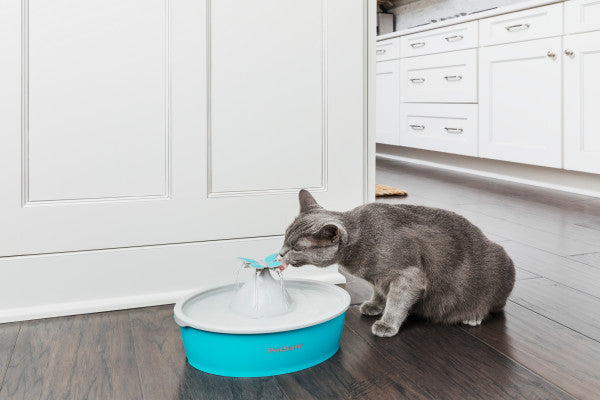Feline whiskers are much more than facial decorations – they’re super sensors that act almost like antennae, helping cats navigate and make sense of the world around them. Their main function is touch, and the tiniest of vibrations can help a cat to feel nearby objects and even air currents from movement. Whiskers also have proprioceptive ability, which means they feed cats information about their orientation in relation their surrounding space and help them to land on their feet. There’s also evidence to suggest whiskers help cats communicate by pointing at potential threats, relaxing in times of contentment, and pulling back when they’re upset. With so many varied and important functions, it’s little wonder that cats may experience something known as ‘whisker fatigue'.
It’s important to note that ‘whisker fatigue’ is not a disease and not all vets agree that it is even a legitimate ‘condition’, with some attributing its symptoms to generalised stress or other recognised health issues. Those who do believe whisker fatigue exists, say it is usually the result of over-stimulation most often caused by excessive touch.
Whisker fatigue is usually recognisable at feeding time and is often attributed to incorrectly sized food and water bowls. Bowls that are too narrow, shallow or deep, will result in a cat’s whiskers coming into repeated contact with the sides or base. That constant sense of unwanted touch is what is said to be the cause of whisker fatigue leading to stress in cats.
If you’re concerned that your cat is experiencing whisker fatigue, there are a few signs to look out for including:
- Not finishing their meals
- Playing with or pawing at food and water
- Hesitation and anxiety when in the vicinity of the food and water bowls
- Pacing back and forth or in circles around the food and water bowls
- Crying or scowling near the food and water bowls
- Aggression, particularly to other cats or humans
- Removing food from the bowl and hiding it or eating it elsewhere
It’s also important to remember that if your cat is displaying strange behaviour, particularly signs of stress, it’s worth investigating with your vet and ruling out potentially more serious complications or medical conditions. Some of the behaviours listed above may be attributed to dental disease or gastrointestinal issues for example.
If, indeed, your cat’s food and water bowls are at the root of its stress, one simple and obvious solution is to replace the receptacles with deeper/shallower/wider/narrower bowls that won’t result in your cat’s whiskers touching the sides or bases. Some manufacturers market their food and water bowls as ‘whisker friendly’ but trial and error with your cat is the only fool-proof way to find a suitable product. Some cat owners report success with drinking fountains that promote hydration and prevent unnecessary whisker stimulation. Others swear by a regular saucer designed for humans as being the best solution. Many experts also agree that cats prefer eating and drinking from flat surfaces, regardless of whether their whiskers have been causing them problems.
Finally, some cat owners believe that a solution to whisker fatigue is to treat the problem at its source by trimming a cat’s whiskers with scissors. You may even hear a professional groomer suggest clipping a cat’s whiskers. However, most genuine experts, qualified professionals and vets will say trimming cats’ whiskers is a definite ‘no no’. At best, a cat will find trimmed whiskers annoying and at worst they will become disorientated, unbalanced and frightened. Lost whiskers do grow back, but they are an essential feature to help cats understand their surroundings.
Speak to your local Just For Pets independent pet store today if you feel that your cat is suffering whisker fatigue and see what alternative bowls they have to suit your cat. Another item to consider is a water fountain, these are wide and open and free flowing to ensure your cat has plenty of room to drink.






